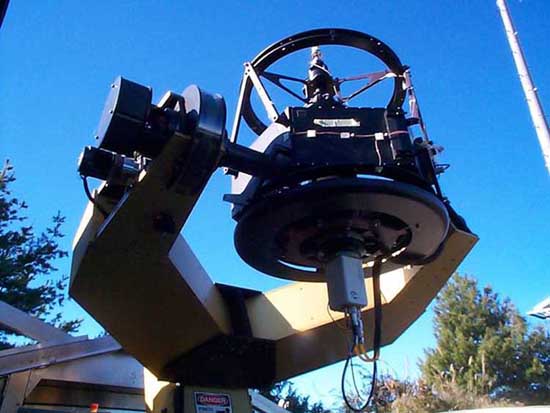Research Gallery > The Taiwanese-American Occultation Survey (TAOS)
Research Gallery
The Taiwanese-American Occultation Survey (TAOS)
| TAOS telescopes |
|
Image Credit: S. K. King

One of the TAOS 0.5m telescopes in its enclosure
|
| The TAOS collaboration includes ASIAA, National Central University, Harvard-Smithsonian Center for Astrophysics and Yonsei University in Korea. We have set up four 50 cm robotic telescopes at the 3 km high NCU high Lu-Lin Observatory in central Taiwan. Wide-field (1.7°) fast (0.2 sec) shutter-less photometry with high sensitivity (quantum efficiency > 85%) 2k x 2k CCD cameras is being used to monitor the light level from 500-1000 stars in each field. From the 100 million measurements per night we look for occultation of stars by intervening Kuiper Belt Objects (KBOs) which are comets in a belt beyond Neptune. One aim is to detect KBOs whose size is about a few kilometers, typical of comets visiting the inner solar system. The other exciting niche for TAOS is to detect KBOs at distance > 80 AU, which is beyond the reach of any telescope using direct detection of reflected or emitted radiation. Recent studies hinted at the existence of a hitherto unknown population of large comets in that region which is too remote to be perturbed by any known planets at their present positions. |
 asiaa.sinica.edu.tw Media Request: epo
asiaa.sinica.edu.tw Media Request: epo asiaa.sinica.edu.tw
asiaa.sinica.edu.tw 
